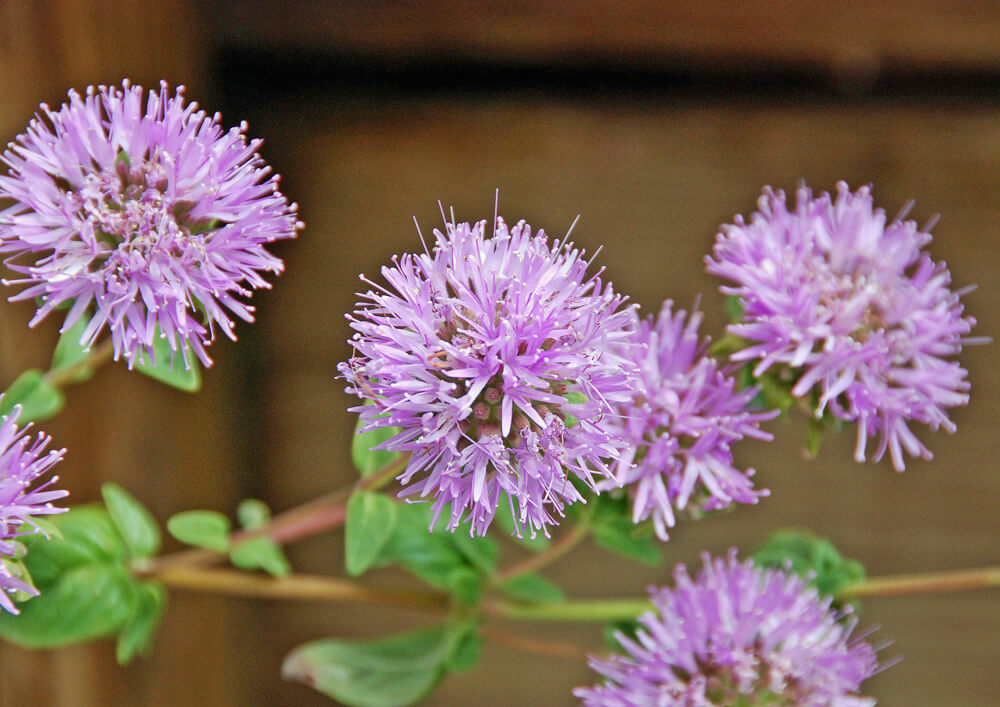Coyote Mint displays masses of purplish flowers in dense rounded heads all through the summer. The deer avoid this plant because of the minty fragrance of the leaves. Native bees, butterflies and hummingbirds are drawn to the flowers. Finches and sparrows eat the seeds in the fall.
Mature specimens are about 2 feet by 2 feet, with a nicely rounded shape. The main stems of a young plant are somewhat brittle, and break easily in a strong wind; when several are planted together the stems intertwine, and the plants suffer less damage in a windy site. Coyote Mint needs full sun and good drainage. It needs very little water, but will respond to additional water; particularly if continual bloom is desired.
In the wild Coyote Mint is often seen in chaparral growing on rocky outcroppings, or at the edges of grasslands. In the garden it can be nicely tucked in between rocks, or allowed to spill over a short retaining wall. Good companions in the garden are Eriophyllums, with bright yellow flowers, or Zauschnerias, with their reddish orange flowers. Plant Monardellas towards the front of a mixed border, or at the edges of walkways to fully enjoy the fragrant leaves.


